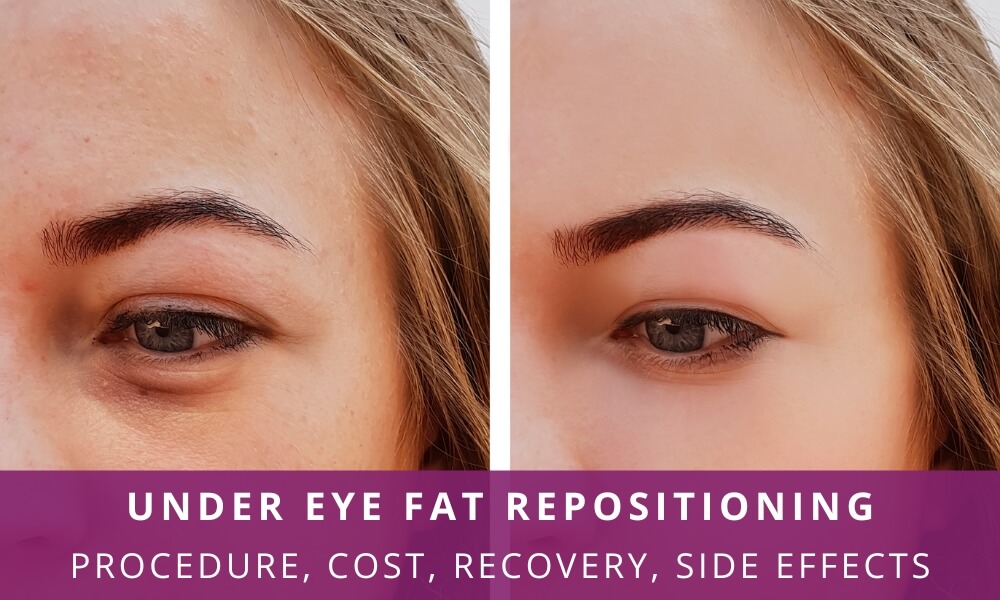Under Eye Fat Repositioning: Procedure, Cost, Recovery, Side Effects
People show signs of aging around the 30s and 40s, although this may differ from person to person depending on genetics and lifestyle. But the eyes are the first and foremost areas where these chances are noticeable. Since the skin around the eyes is thin, fine lines and puffiness are more noticeable. Puffiness is, especially, a discernible sign caused by weakening muscles and tissue structure. As the skin begins to sag, fat and fluid around the eyes begin to settle below the eyes. Read on to learn more about under eye fat repositioning, also known as lower blepharoplasty fat repositioning.
What Causes Under Eye Fat?
While age is a significant factor causing baggy eyes, several other reasons could cause or worsen the problem. Fluid retention upon waking after a salty meal or after crying may produce baggy eyes. However, the latter generally disappears after a few hours. Other reasons include lack of sleep, alcohol, allergic reaction, genetics, and medical conditions like dermatitis, renal disease, and autoimmune diseases like thyroid eye disease. The doctor may suggest a treatment plan depending on what’s causing the puffiness. For instance, if age and genetics are likely factors, they may suggest lower blepharoplasty or under eye fat repositioning surgery.
What Is Under Eye Fat Repositioning?
Earlier, lower blepharoplasty involved removing excess fat, skin, or muscles from the lower eyelids. However, doctors soon identified that this eventually led to the eyes looking more gaunt or hollowed, thereby accelerating the aging process rather than stopping it. This led doctors to try preserving the eyelid fat rather than removing it. Thus the term under eye fat Repositioning, i.e., redistributing eyelid fat from areas of excess to areas of deficit. This helps reduce lower eyelid bags and helps fill the eyelid depressions using this fat.
The surgery involves repositioning the lower eyelid pads into the tear trough to fill the depression. As you age, eyelid fats become more and more precious and must be preserved as much as possible to prevent the eyes from becoming hollow. Hence, doctors try their best not to trim under eye fat; instead, they try and fill as many areas of depression as they need this fat. Typically, under eye fat repositioning helps improve eyelid contour, thereby giving you a more youthful appearance. Also, fats don’t dissolve over time like dermal fillers, giving you a superior and long-lasting result. Lower blepharoplasty fat repositioning is a fairly delicate procedure and must be performed only by an experienced surgeon.
Lower Blepharoplasty With Fat Repositioning Recovery
Under eye fat repositioning is usually an outpatient procedure unless you have other procedures scheduled to be performed simultaneously. The doctor will prescribe ointments and eye drops to prevent infections. You may expect bruising or dry eyes in the days after surgery. The doctor may advise you to avoid strenuous activities for some time after surgery and wear dark sunglasses to protect the eyes.
Visit us to learn more about under eye fat repositioning and if you’re a suitable candidate for the procedure.

